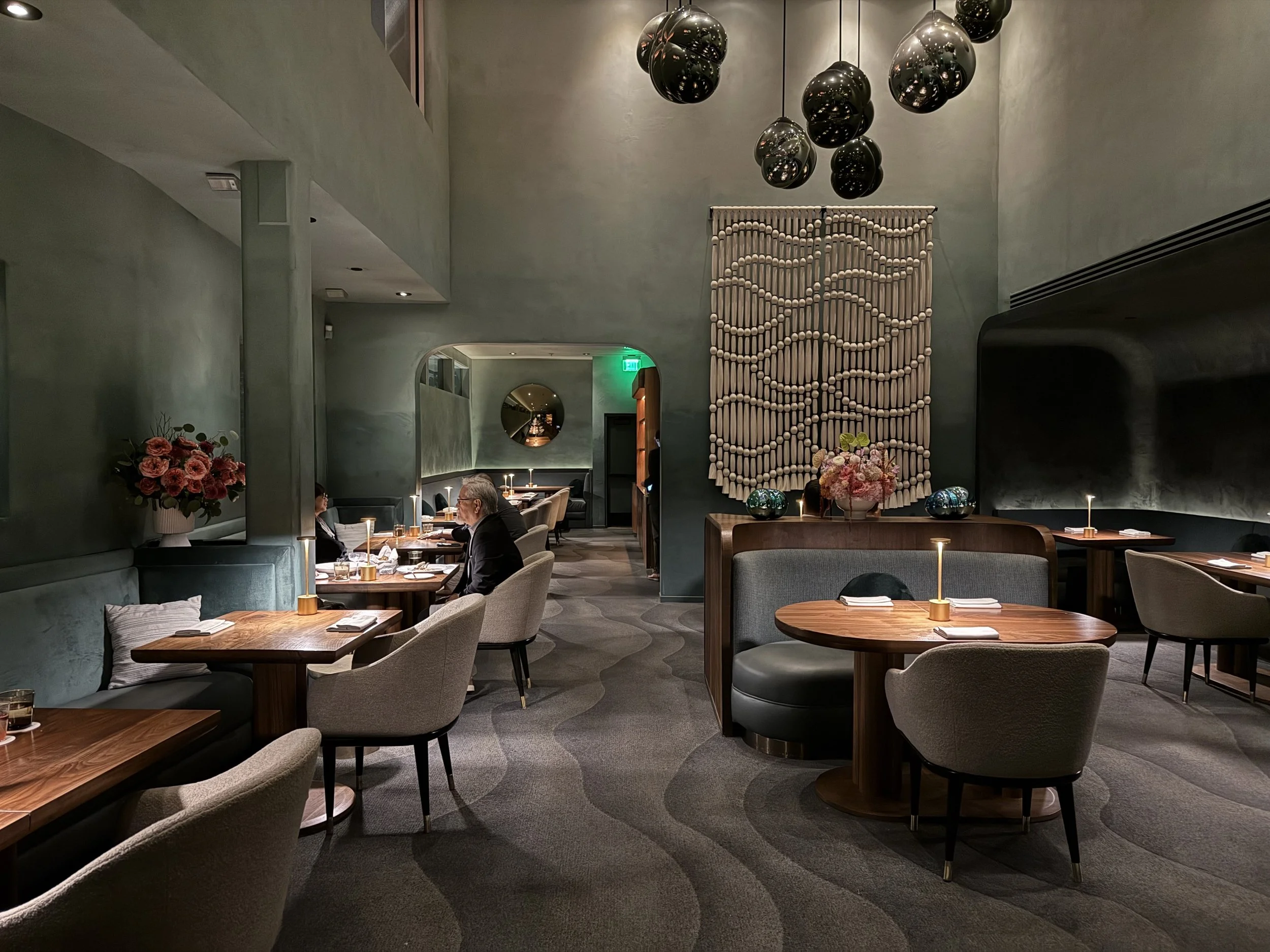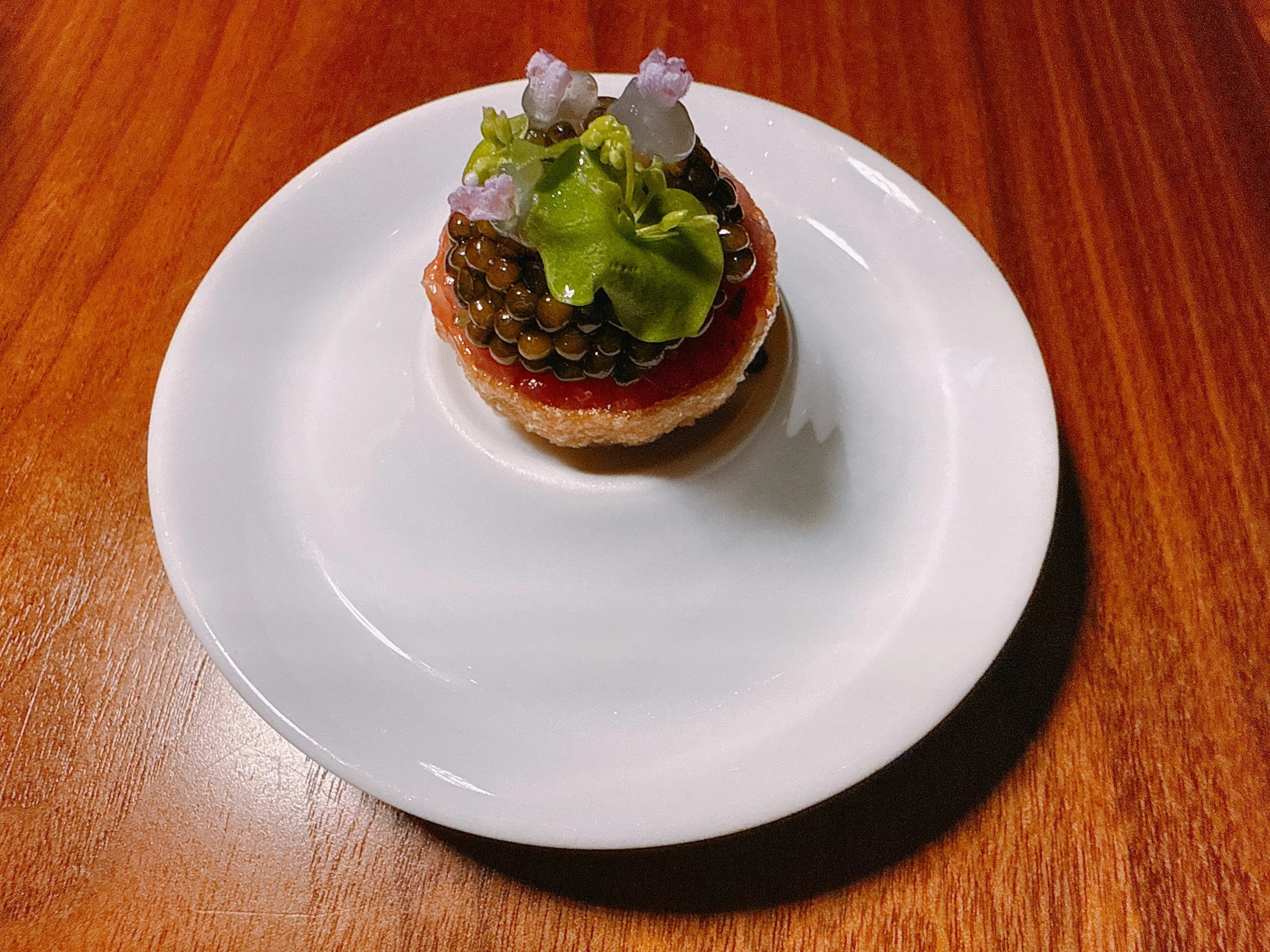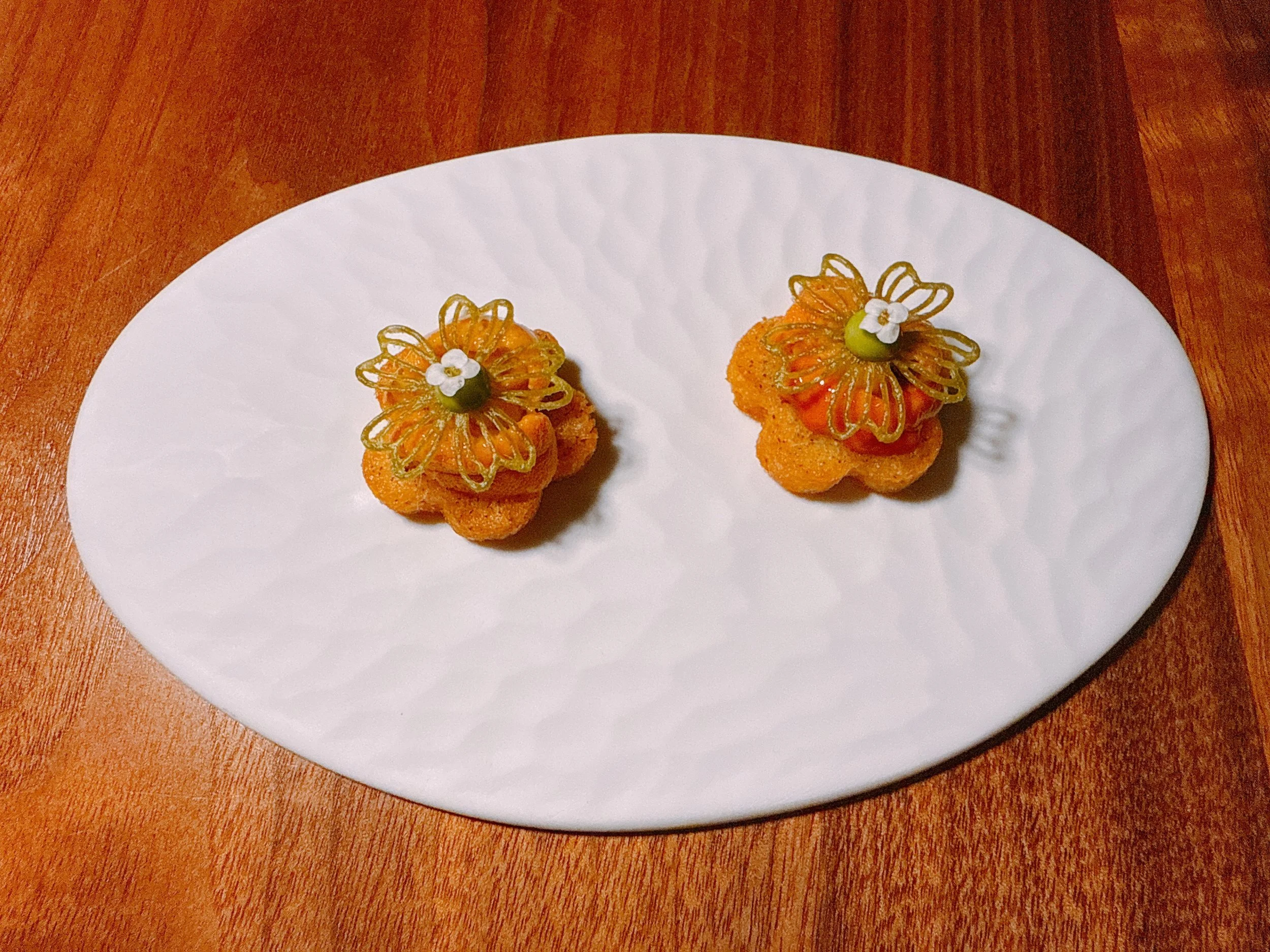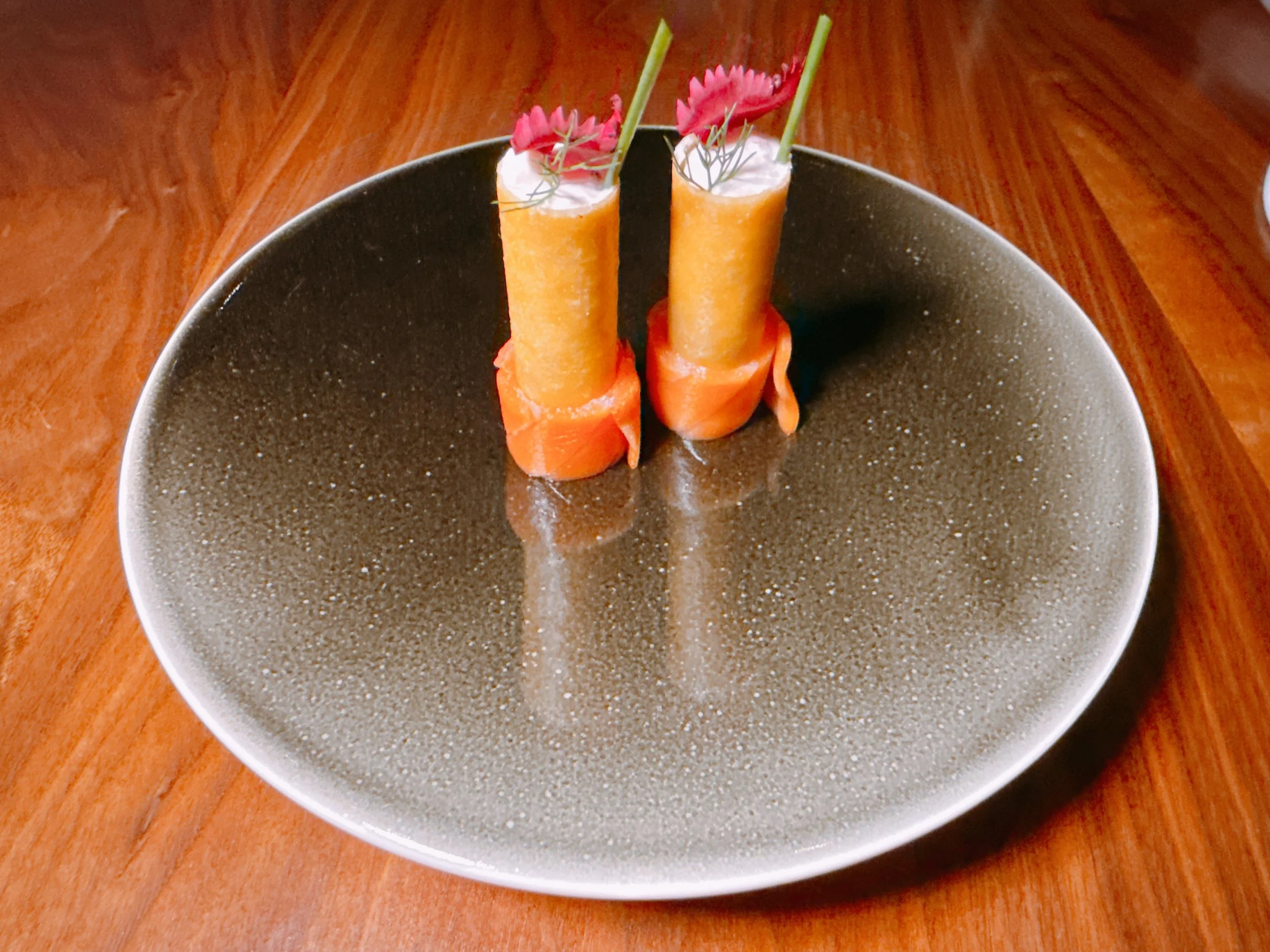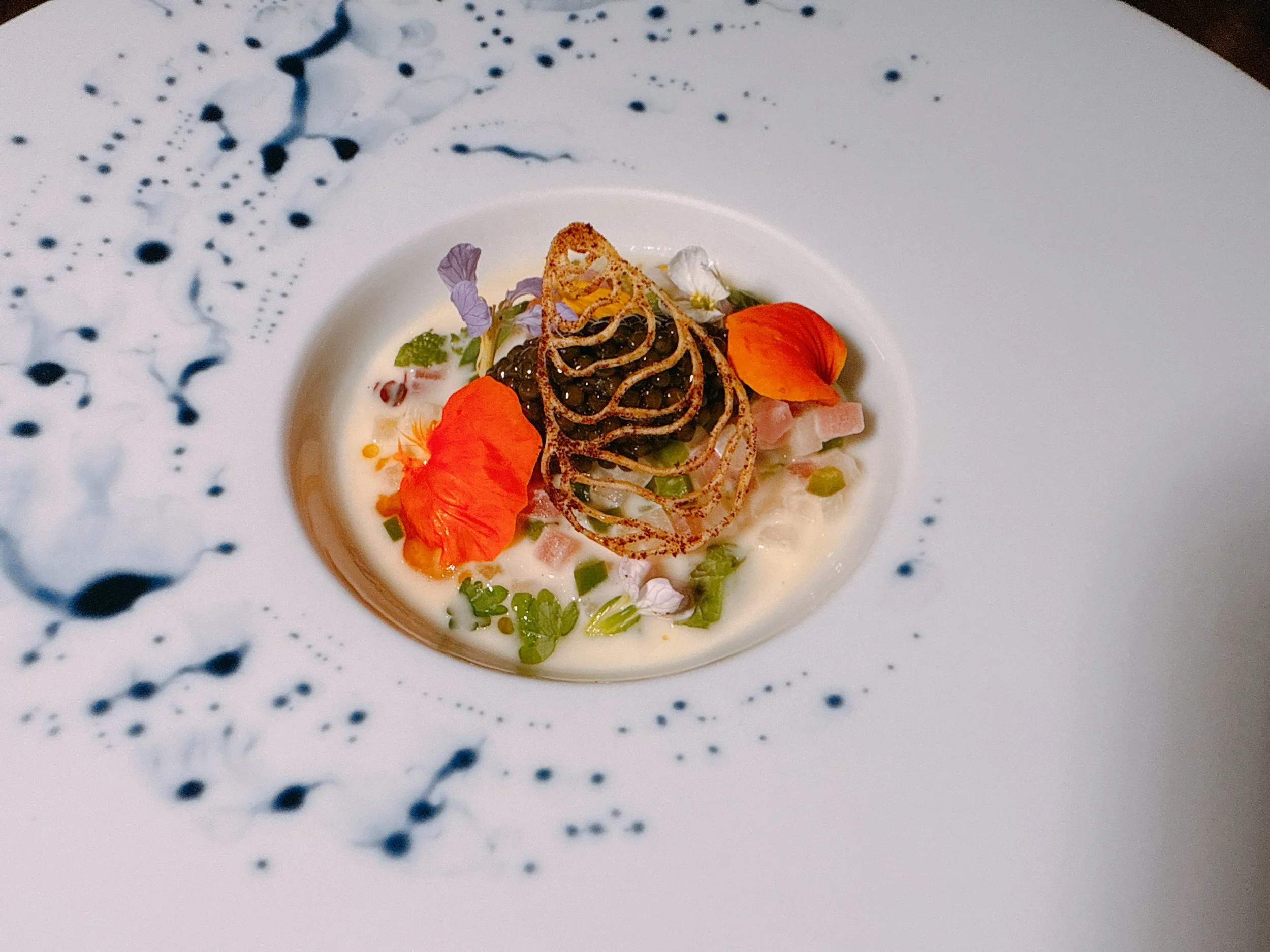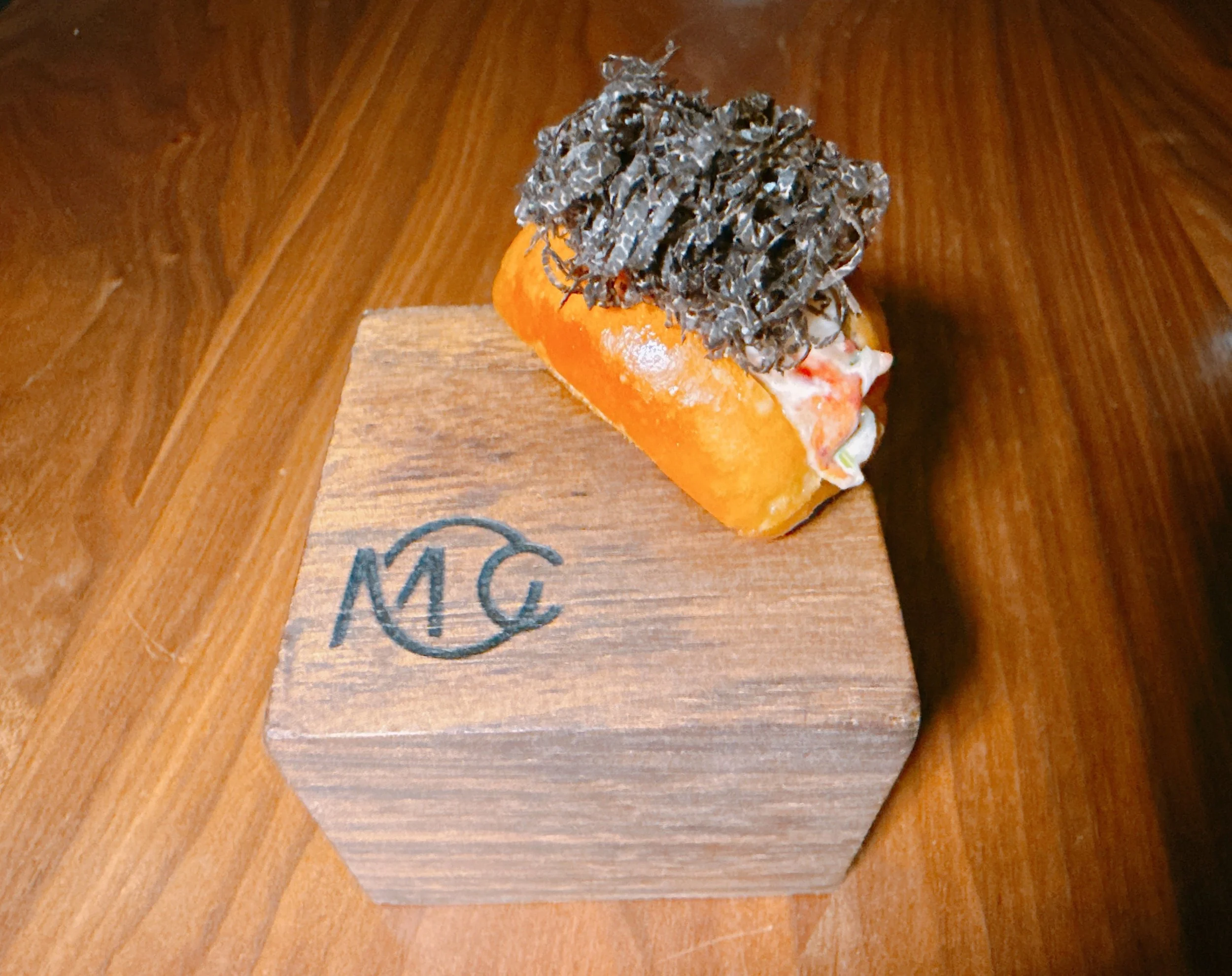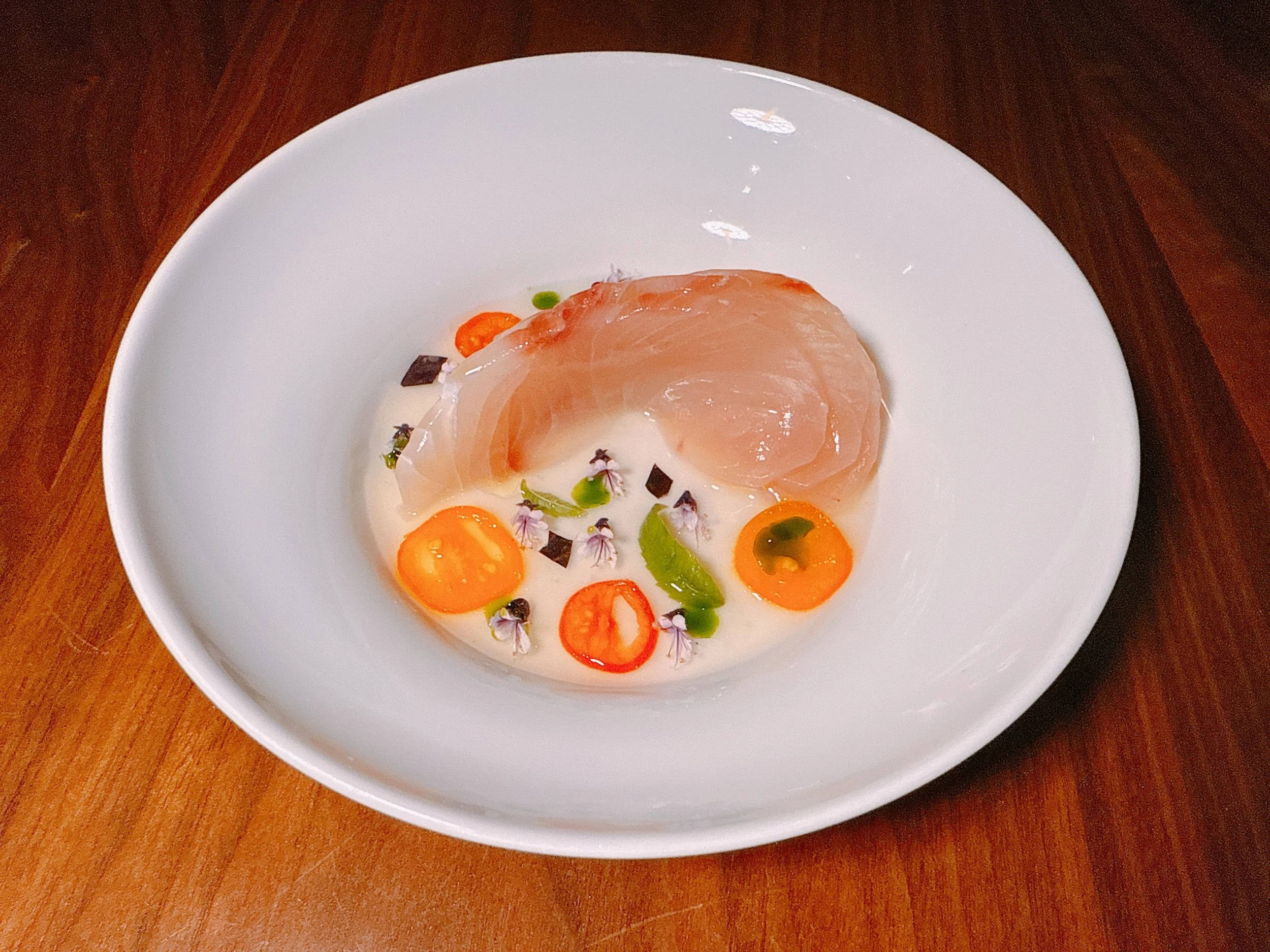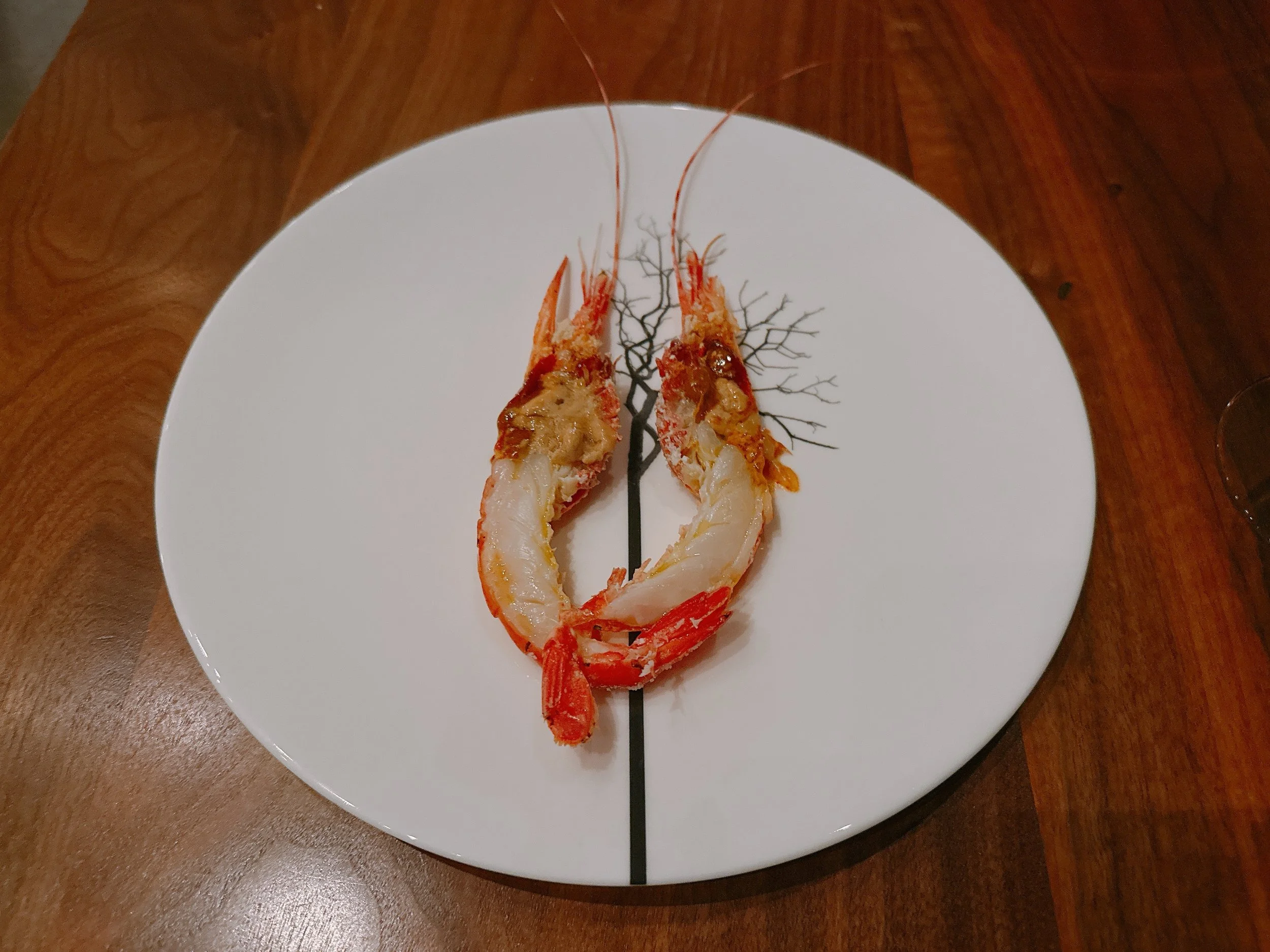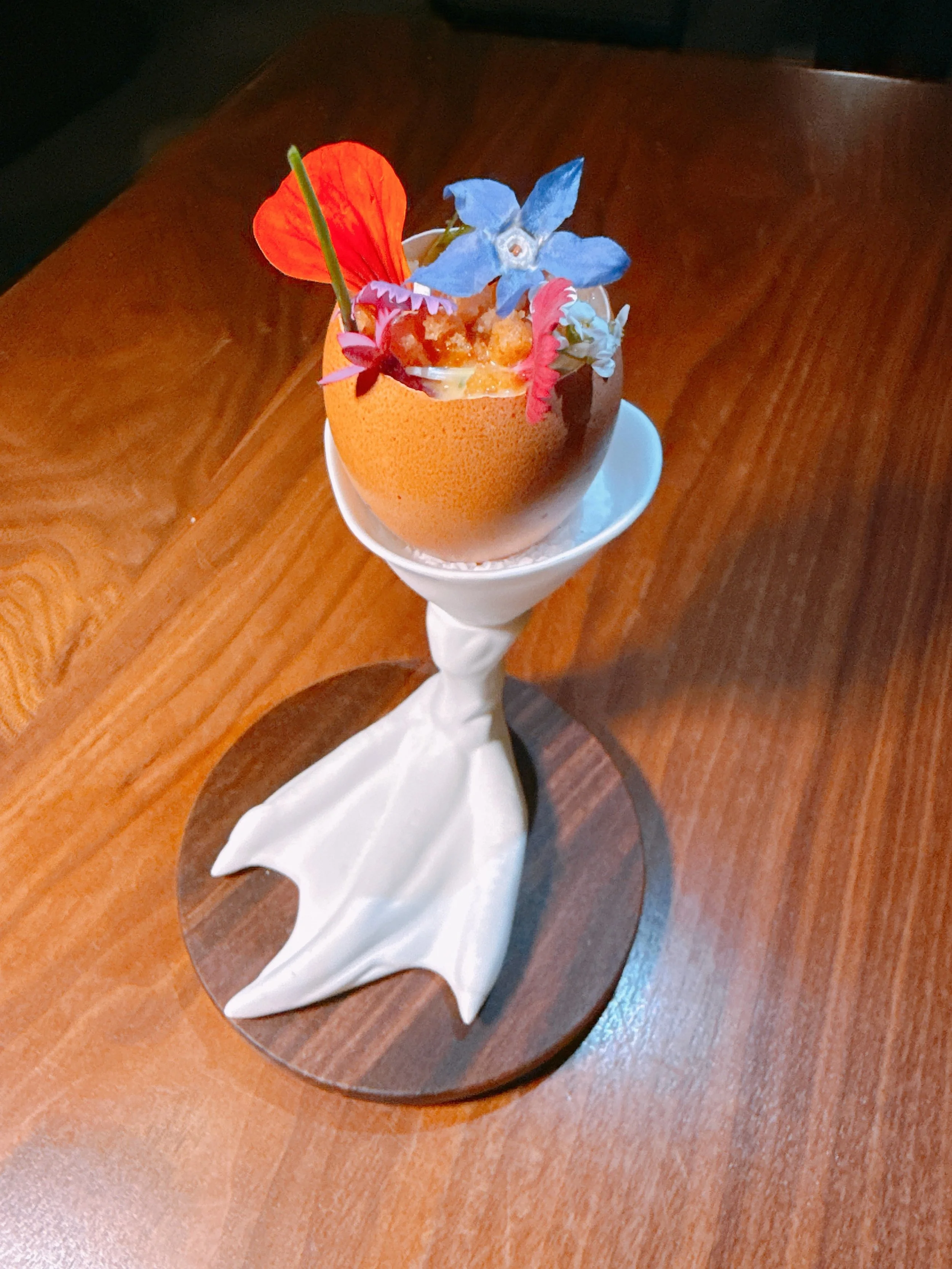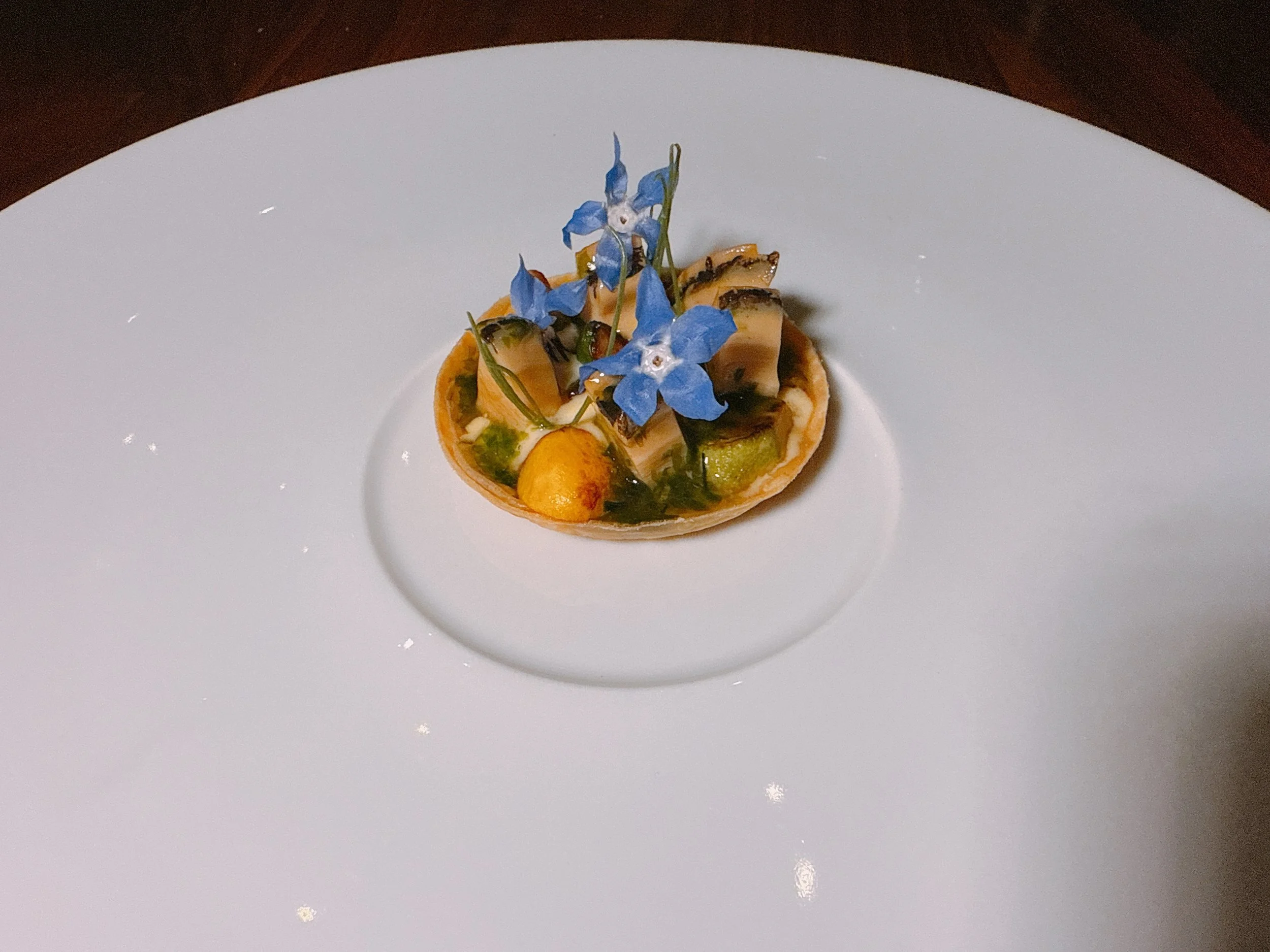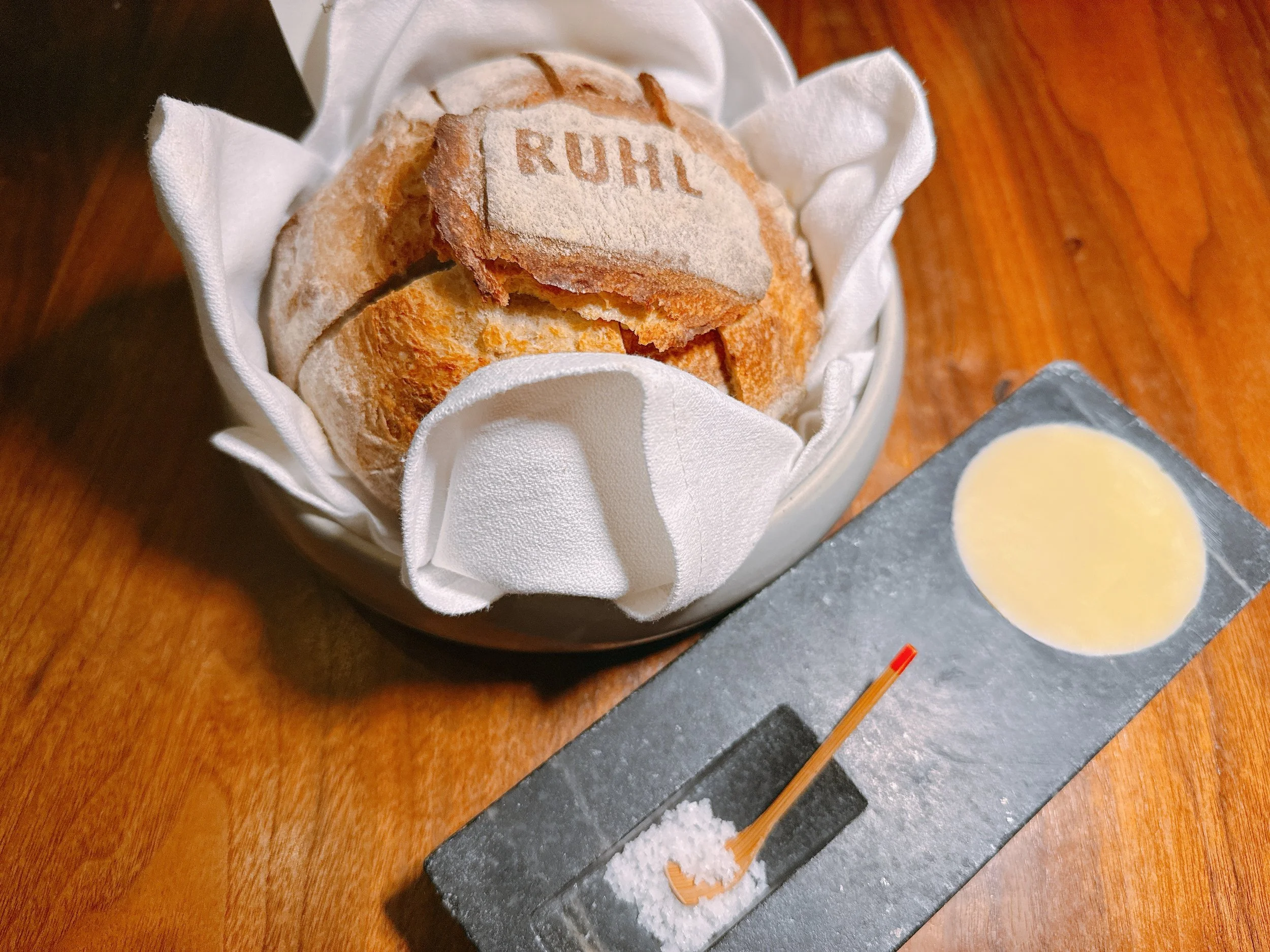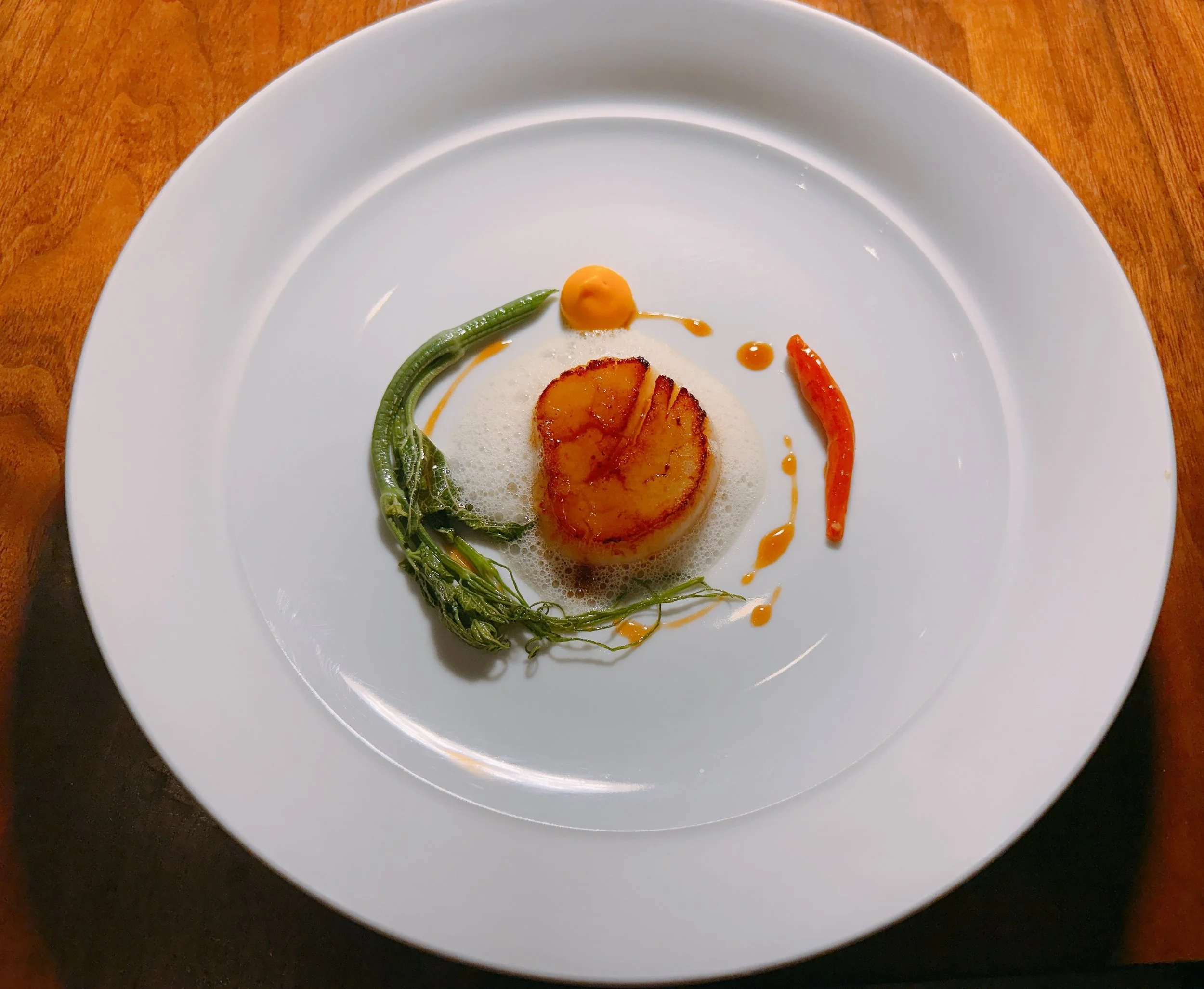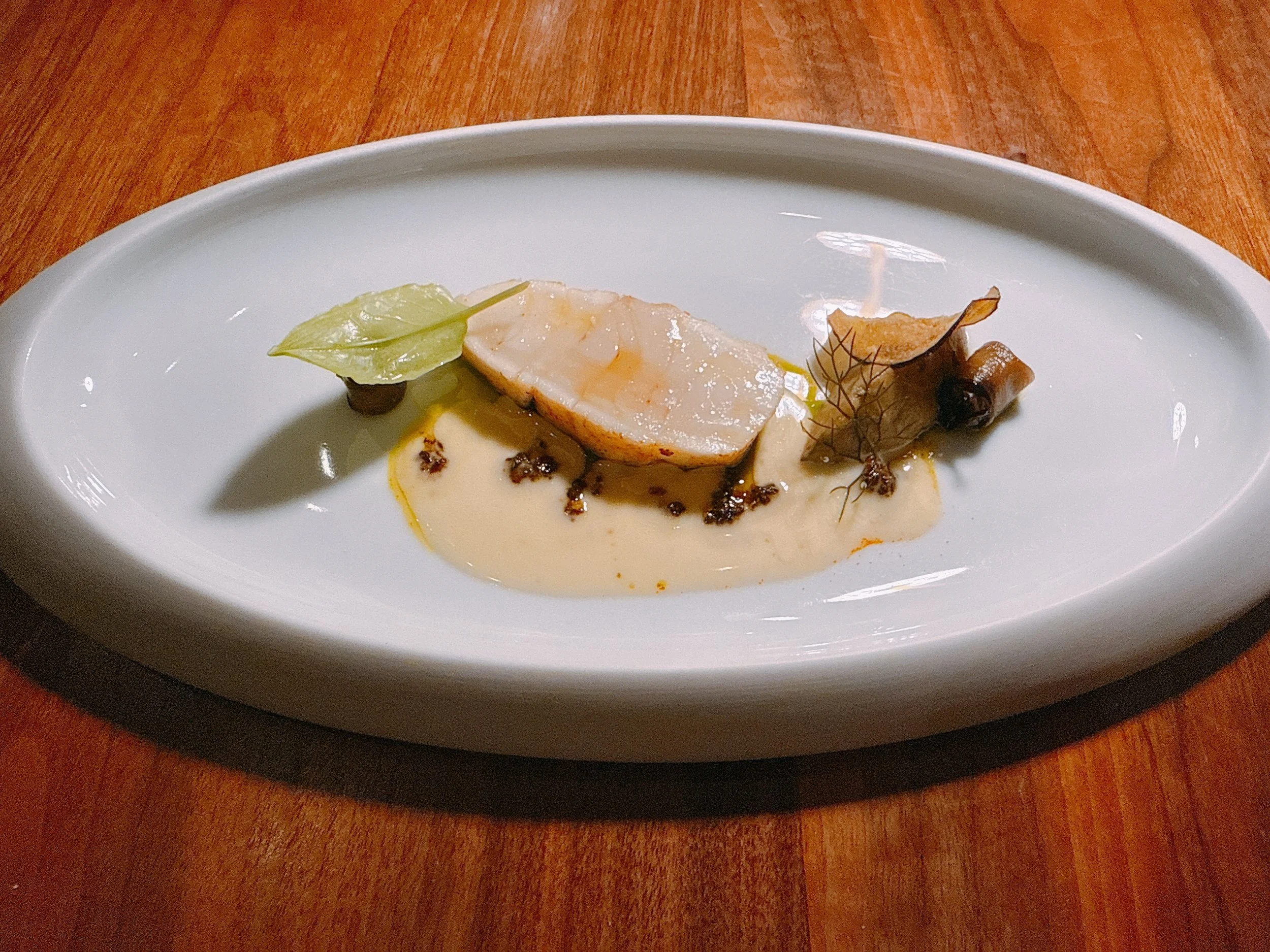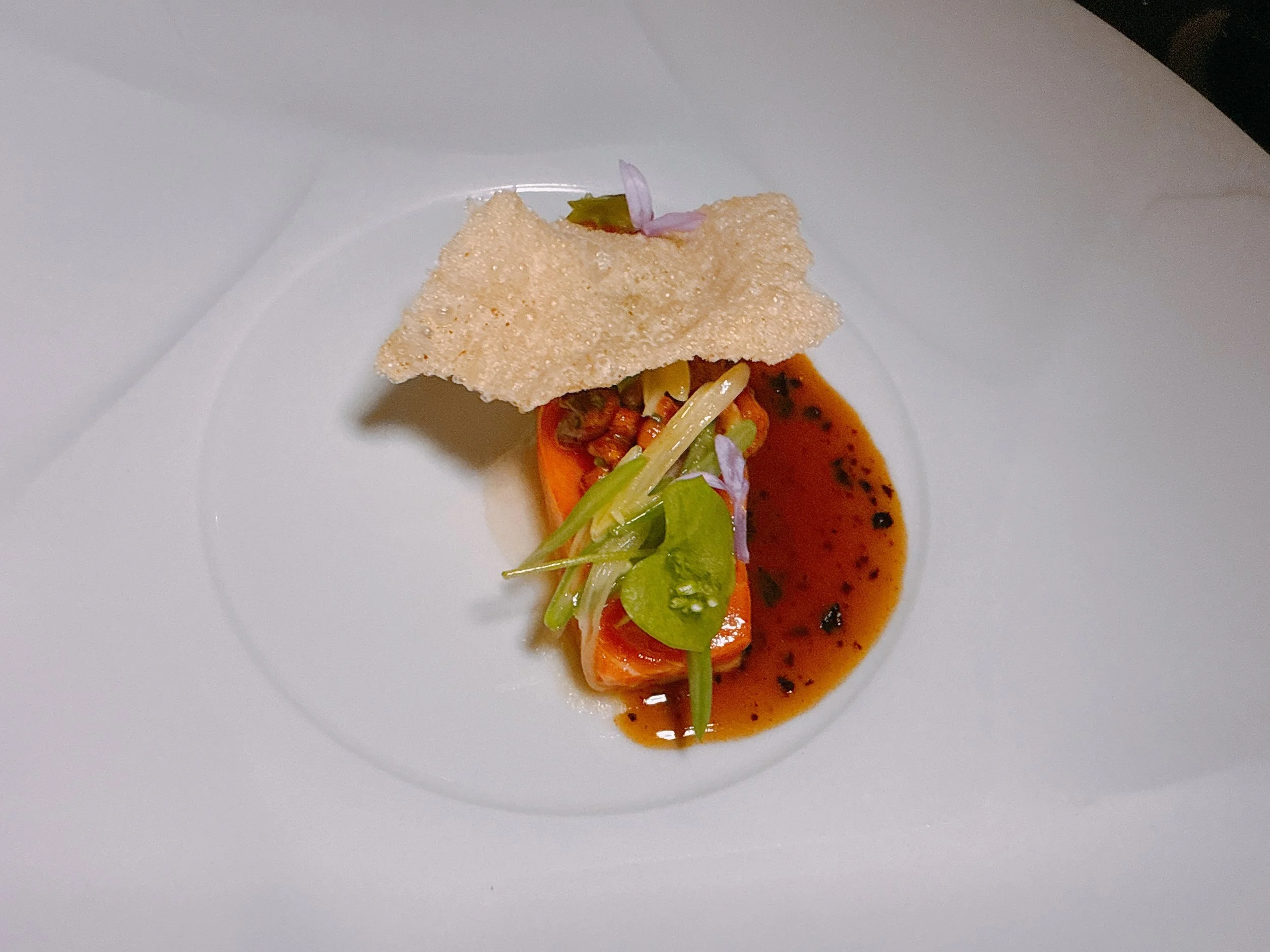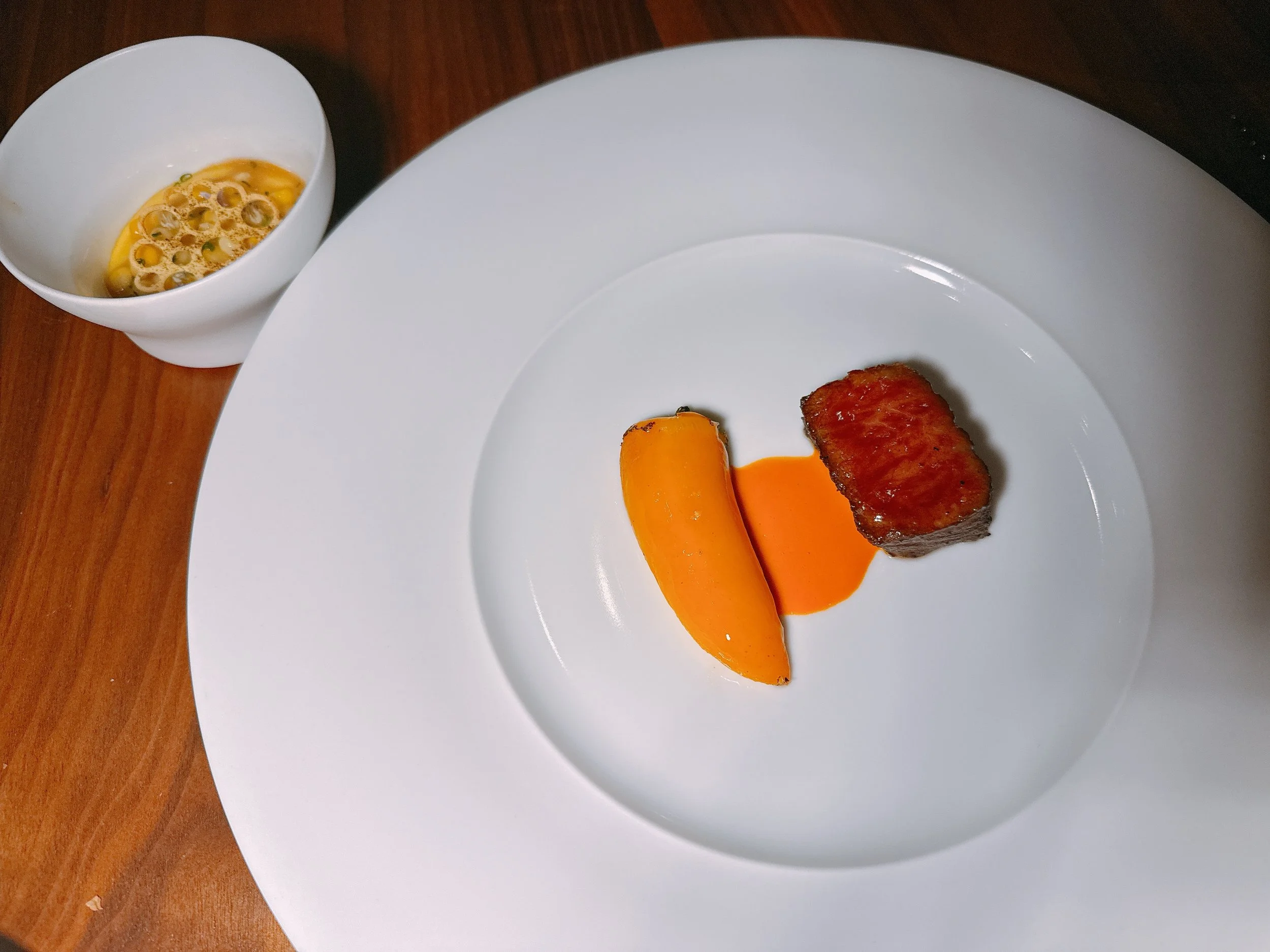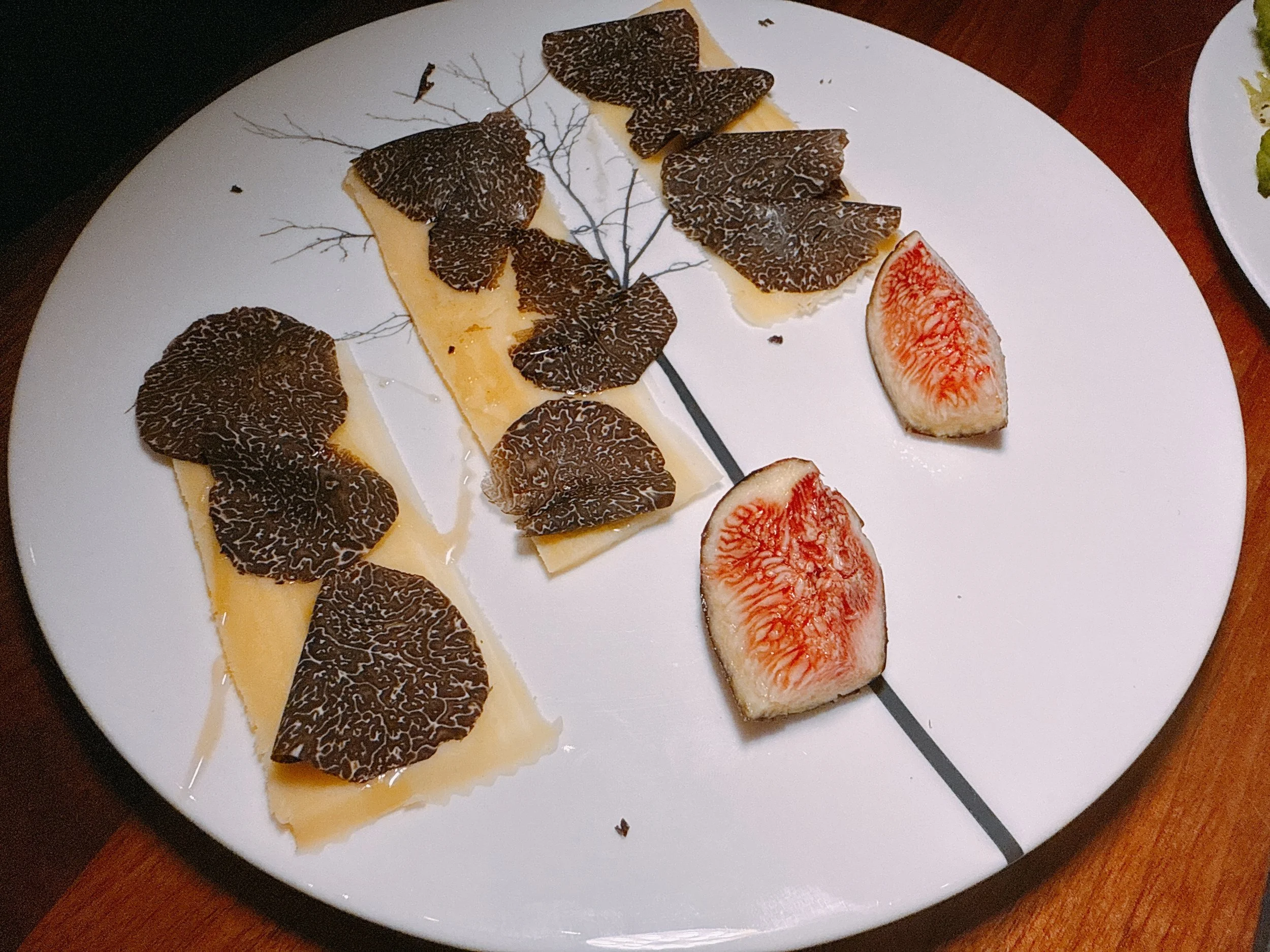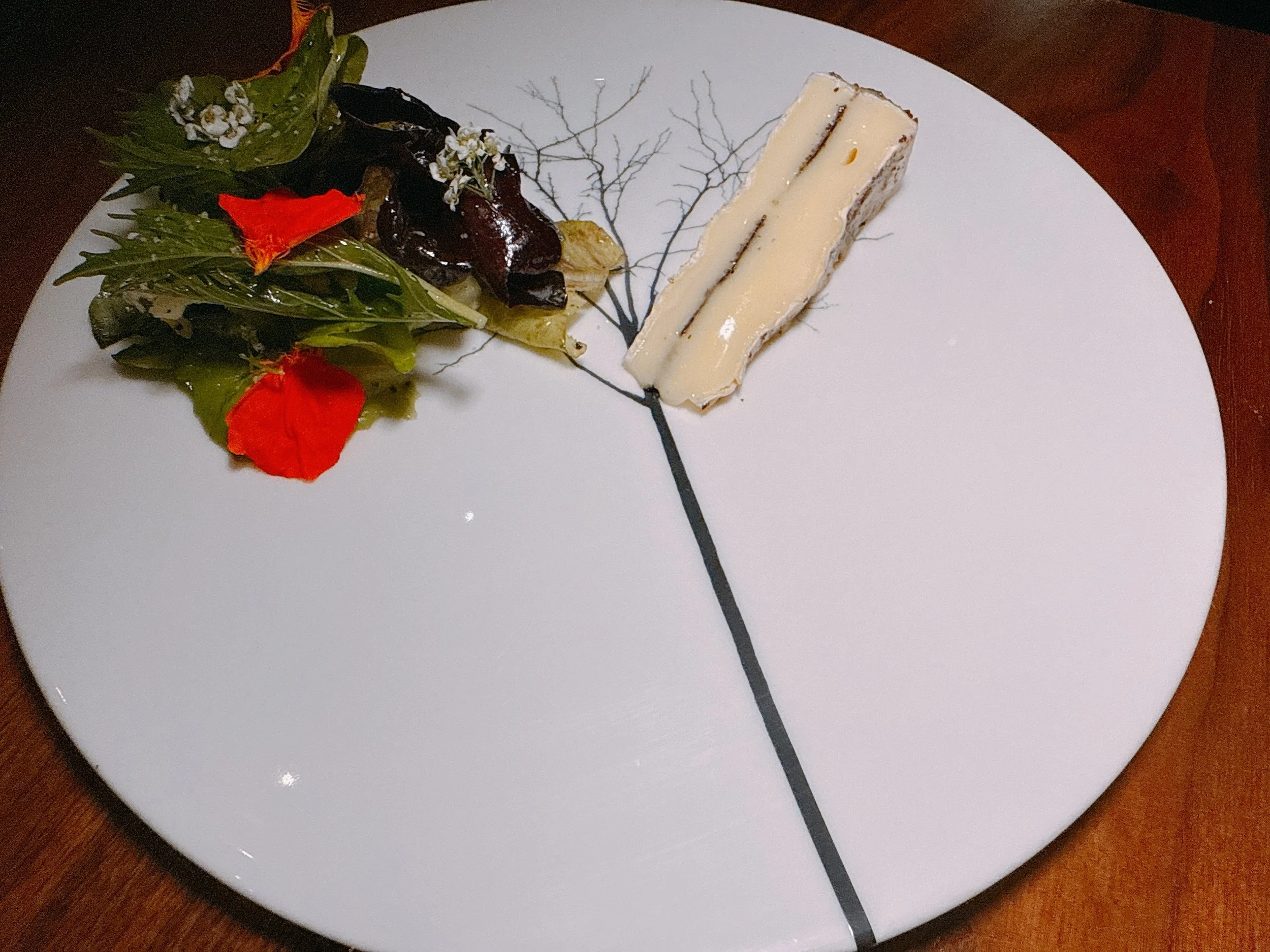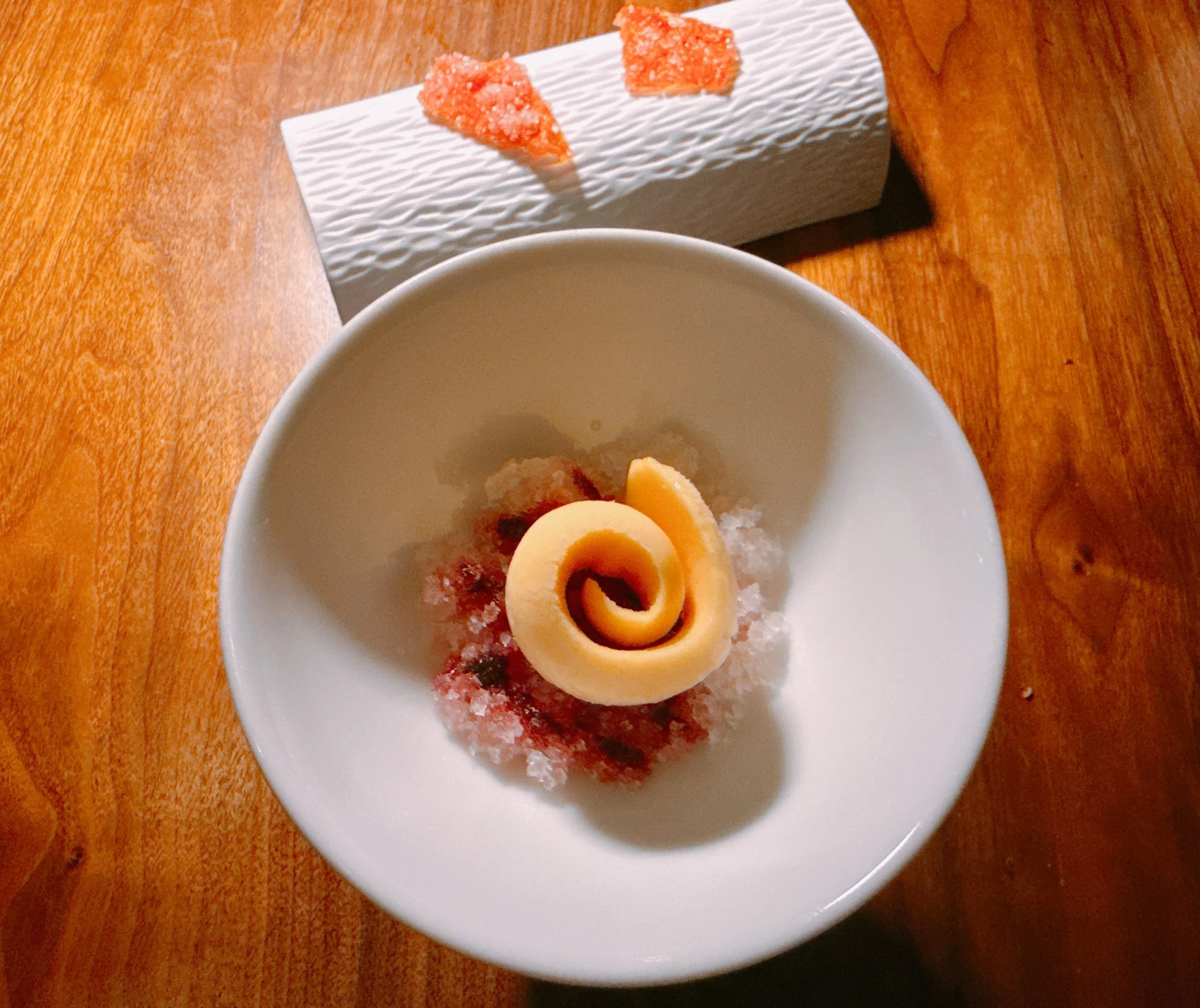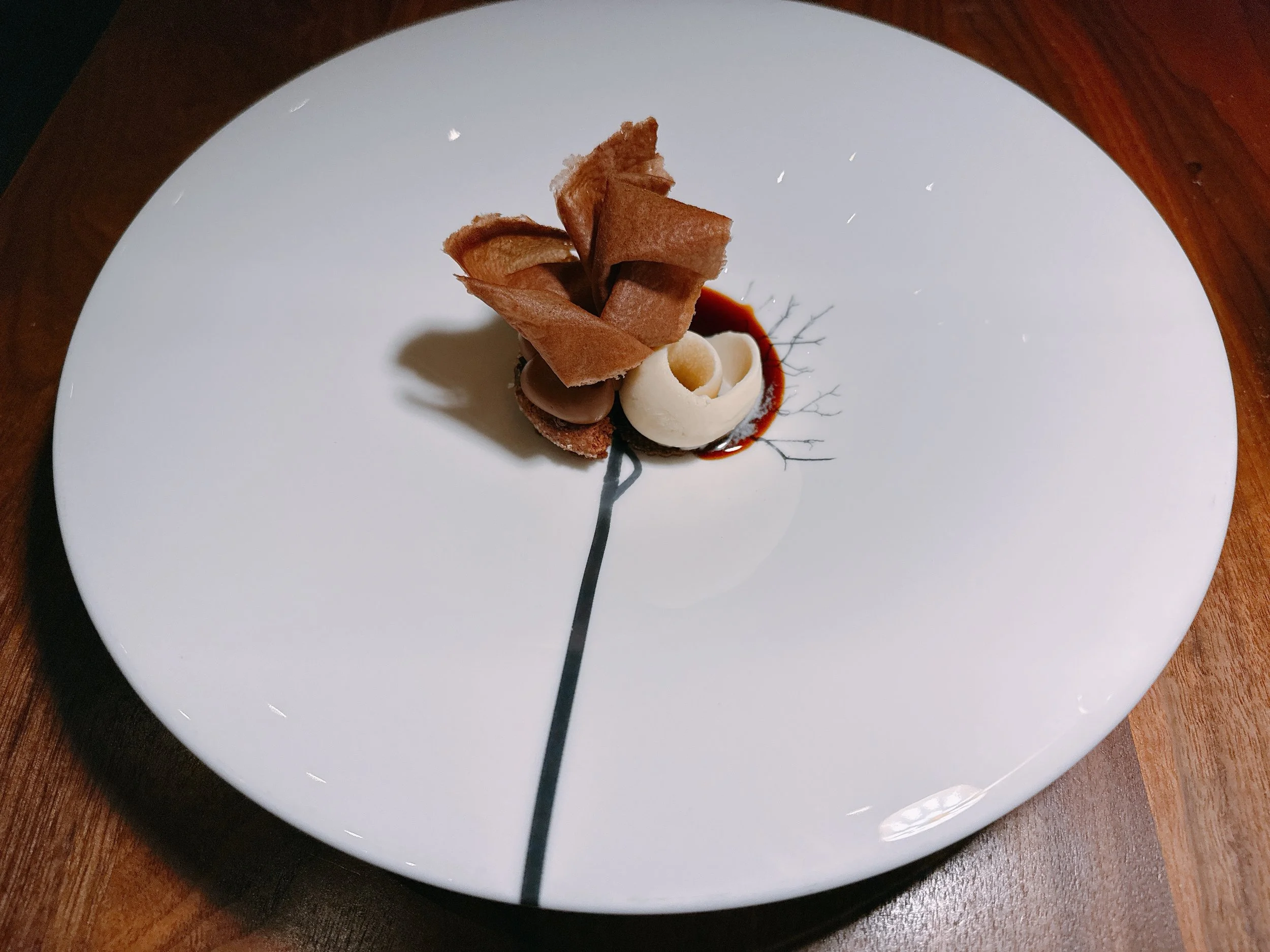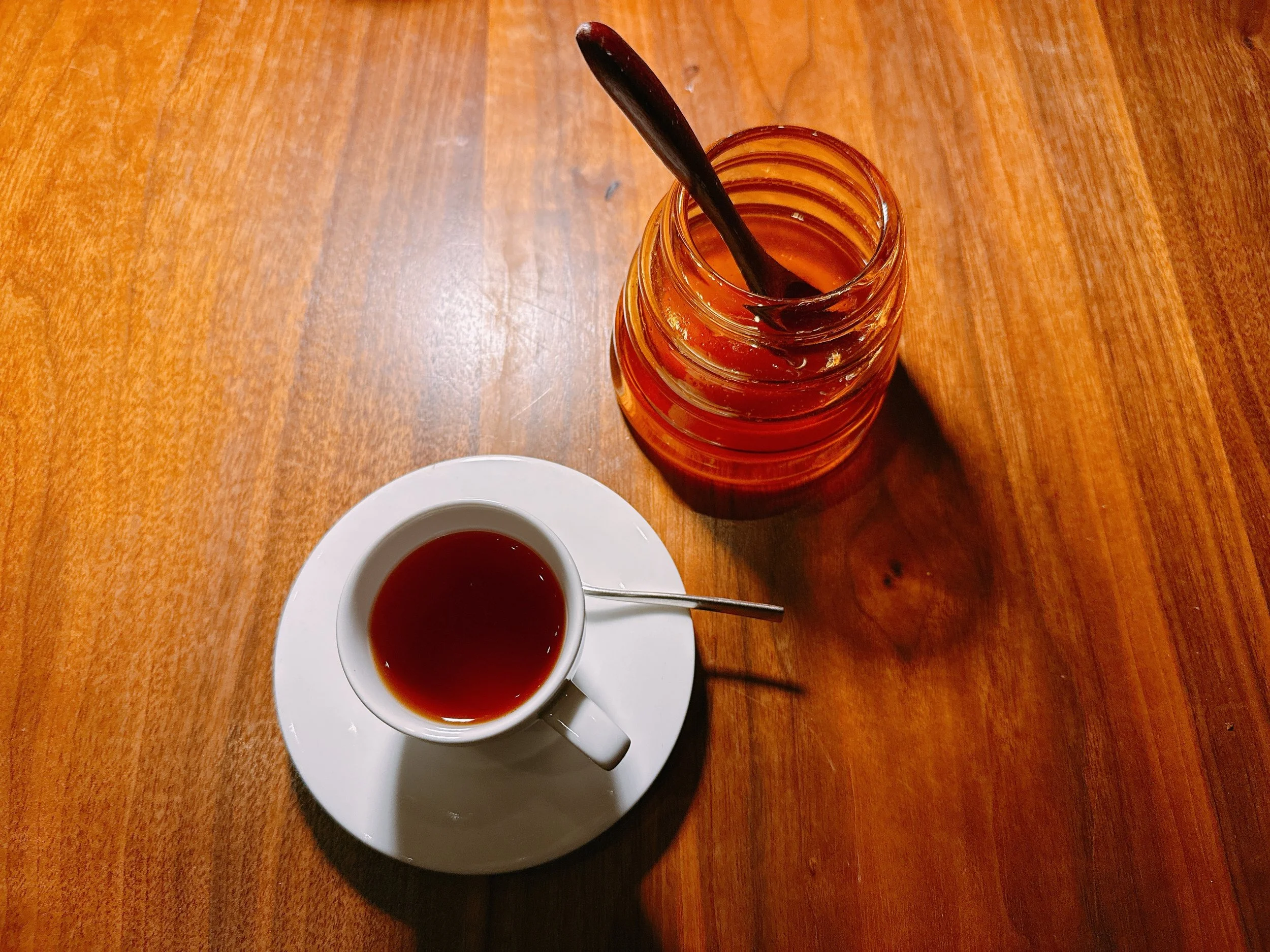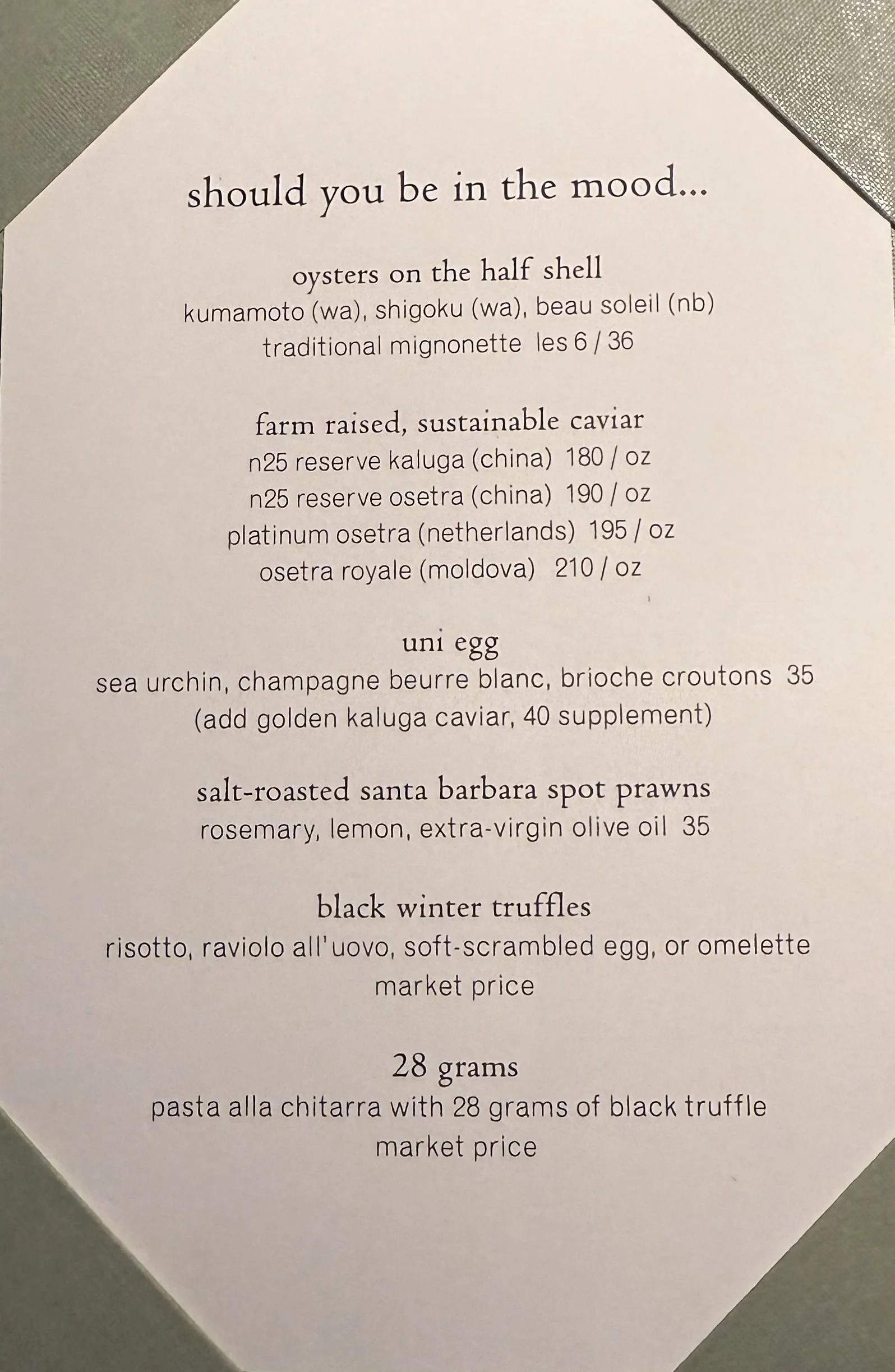Providence - Los Angeles
Rating: 18/20
Where: Los Angeles, CA
When: Dinner for 2 on 1 July 2025
Cost per Person: Tasting menu $325-$450, Wine pairing $175(?)-$340
Accolades: 3 Michelin Stars
Why: Seafood-focused Californian cuisine with local, sustainable ingredients
Anyone interested in experiencing fine dining in Los Angeles will sooner or later came across “Providence”. The restaurant on Melrose Avenue, at the southern end of Hollywood, has been serving elevated seafood-focused Californian cuisine since 2005. During that time, it has garnered acclaims and awards from near and far, including a James Beard award in 2019 and two Michelin stars whenever Michelin actually covered Los Angeles. And finally, just in time for the restaurant’s 20th birthday in 2025, it received its third Michelin star.
We had visited Providence several times over the past ten years, always enjoying its expertly cooked and often quite creative renditions of local seafood. Our last visit had been four years ago, so the third star gave us the perfect excuse to come back to Los Angeles.
The restaurant's high-ceilinged dining room had been refurbished since the Covid pandemic. Gone were the seashells on the walls, to be replaced by more abstract maritime references - was that a fishing net, perhaps? The walls were now painted in a shade of green, notably darker than the previous blue. In addition to the main dining room, there were also a bar and a private dining room with glass windows facing the kitchen.
The format of the menu has changed over the years, and on this visit centered on a single tasting menu with a choice of three main courses. This was priced at $325, but there was also the possibility of getting all three main courses - in slightly smaller portions - for $450. We were informed that the longer menu could not be made pescatarian (a bit surprising for a seafood restaurant), so we settled for the regular menu and added a couple of dishes from the compact a la carte menu. In the end, we only missed out on a single main dish: a preparation of duck. There were two wine pairings, for $175 (or thereabouts, I forgot to write down the exact amount) and $340, respectively. The lower priced pairing took all its wines from the by-the-glass wine list, so I opted for the more expensive pairing to see what else was on offer. The wines were all quite good, and a good match for the food. For what it's worth though, all wines would have cost less than $100 per bottle in a store, except for the Krug champagne that started the pairing. I should note that all of prices were very much in flux - the website already showed new post-third-star prices of $375 and $495 for the menus, and the wine pairing prices were not listed anywhere, neither in print nor online, meaning that they also might change frequently.
Our dinner started with three small bites. A rice flour tartlet was filled with big eye tuna tartare and golden kaluga caviar. Tableside, a basil-ginger vinegar was drizzled on top. This was a good quality tuna, but the dish felt a bit heavy - more acidity might have lightened it up 17. A potato cracker was topped with egg dashi, uni (sea urchin), nori seaweed and a nori aioli. This crunchy bite was lighter than the tuna tartare and the seaweed added some nice flavor 17. Lastly, a feuille de brick cylinder was filled with crème fraîche, shallots, chives and dill, and sat on top of a rolled-up slice of house-cured king salmon. A classic combination, but executed essentially perfectly. The feuille de brick was airy, the crème fraîche very light with a lovely aftertaste of dill, and the salmon practically melted in one's mouth. Terrific 19.
The first official course of the menu (and the start of the wine pairing) featured a shigoku oyster from Washington state. It was a particularly large specimen called a “Fat Bastard”, and had been steamed and chopped into pieces. On the side was a kimchi made from ingredients such as daikon and apples, a butter sauce, caviar, herbs and flowers from the restaurant's garden, all topped with a potato tuile. The oyster was pretty light in flavor - the kimchi and pickles were much stronger. With the herbs and lovely sauce, this ended up being a fresh and light dish, perfect for springtime or summer 18.
Next came a small bite that was not listed on the menu, a “Maine lobster roll”. A piece of Maine lobster was served on a crunchy, toasted brioche with French butter, chives and Australian black truffles. The lobster was light in taste but had a great, soft consistency. The bite was very buttery and the truffles added more flavor. My wife declared this to be the best lobster roll that she had ever had. And I can see why - it did away with the often overly mayonnaisey filling, while keeping all the good parts and adding some truffles 18.
Three slices of raw Japanese yellowtail were served with sungold tomatoes, garden herbs such as basil, purple basil, shiso, and a shiso oil. These accompaniments were lovely: light, herbal and fruity (the latter thanks to the tomatoes) with a fragrant sauce. The fish was of good quality, but tasted oddly bland. Maybe it was from eating too much sushi in the past, but we would have preferred stronger flavors to go with the yellowtail - soy sauce and wasabi rather than this light herbal sauce. Or alternatively a lighter cut of fish that would be a better match for the sauce? 16
At this point, we we served two dishes from the a la carte menu. Spot prawns from Santa Barbara had been cooked in extremely hot kosher salt, and were halved lengthwise before being dressed with only olive oil and freshly squeezed lemon juice. The prawn meat was delicious, as was the dressing - so simple, yet so good 18. The other dish was the restaurant's signature “uni egg”. An egg shell had been filled with uni, liquid egg yolk, brioche croutons, a champagne beurre blanc and garden herbs. It had an amazingly rich, very umami taste from the egg yolk and the uni, but that was carefully balanced by the acidity of the beurre blanc. The croutons added a bit of crunch. An amazing dish - I can only imagine how good this would have been with the (optional) addition of caviar. Next time... 20
Back to the tasting menu, we were served a farmed abalone from Ventura. It had been cut into pieces and came in a tartlet with some squash vegetables, a sabayon, an abalone liver mousse, seaweed, agretti (an herb), and edible flowers. Curiously, the abalone was slightly colder than the rest of the dish - clearly they hadn't been prepared together. It had a medium bite and a notable seafood taste. The other ingredients were nice additions: the crunchy tarte, the well-salted squash that felt like zucchini, and the flavorful seaweed. Altogether a nice combination, but one that also felt a bit more rustic compared to the previous, more refined, dishes. That was partially due to the size of the abalone pieces, they seemed a tad too big for the dish 18.
Sourdough bread made from heritage red fife wheat was served with a butter from Normandy and Maldon salt. Its crust was medium crunchy and its interior chewy with a light flavor. Lovely, and I don't think I've ever seen a personalized loaf of bread before (see picture) 17.
A scallop from Hokkaido had been glazed with a reduction of “scallop tea” (essentially a broth made from the not-usually-eaten parts of the scallop). It sat on a scallop XO sauce, more scallop tea, a scallop syrup, and came with chayote greens, a small carrot and a carrot puree. The scallop was of good quality, although maybe slightly overcooked. Thanks to its glaze, it had a bit of a chewy texture (in a good way, though) that rhymed with the chewy textures of the carrot and (to a lesser extent) the chayote greens - a triptych of matching textures. The carrot mousse was so amazingly flavored that I could have eaten a whole bowl of it - yum! The XO sauce tasted of seafood, but was not spicy 18. (A 19 from my wife.)
Striped bass from Massachusetts was served with several preparations of eggplant: pickled, charred, as a chip and as an eggplant dashi (i.e. a dashi with French butter and the cooking juices of the eggplant). There was also some espelette pepper, vadouvan curry spice and a mint oil. Ingredient-wise, this felt like a Middle-Eastern-inspired dish, but tastewise, it stood on its own. The fish had a lovely firm texture and a great curry flavor, and the various forms of eggplant contributed lots of smokiness to the dish. A great combination 18.
We chose two of the three possible main courses. A salmon filet was served with romano beans, garlic blossoms, chanterelle mushrooms and a sauce made of chanterelles and black truffles. The filet was a lovely cut of salmon, but the dish's taste was dominated by mushrooms. A very savory, umami fish dish that conceivably could have been paired with a light red wine 18. Our other main dish, coming with a $45 upcharge, was an A5 wagyu filet, served next to a Jimmy Nardello pepper filled with wagyu meat and a lunchbox pepper sauce. In a separate bowl was a mixture of corn puree and corn kernels, topped with chives and a crispy corn wafer. This dish was somewhat of a mixed bag: some great parts, but others that didn't quite work for me. The pepper was delicious: sweet and fresh. Its sausage filling seemed to be mainly there for texture - its taste paled in comparison to the surrounding pepper. The wagyu filet had a great flavor and a nice sear, but it was also extremely rich (i.e. containing lots of fat). My personal preference would have been a leaner, or at least more marbled, cut. The side of corn was much too sweet for my taste - the pepper had had a better balance of savoriness and sweetness 16.
If one was still hungry at this point, there was the possibility to add one or two cheese courses. Option one was a thinly sliced comté cheese, drizzled with honey from the restaurant's rooftop and topped with shaved black truffles. Next to it was a fig from “a tree out in front”. This was a lovely hard cheese that went well with the nutty truffles. The other choice was a brie covered and layered with a truffle cream, served next to a salad dressed in a light vinaigrette. The fresh salad was lovely and refreshing after such a long meal. The creamy and buttery cheese unfortunately only had a very light truffle flavor. Both cheeses were served with slices of toasted seeded baguette that had a great crunch 16.
Our first dessert was based on peaches. Fermented peaches were topped with a red shiso granita and a peach-yuzu sorbet. On a separate plate were some candied peaches. I loved how focused this dish was - there was a strong peach flavor throughout. The sorbet was delicious and the candied peaches unexpectedly seemed a bit sour 17.
Dessert number two featured a house-made flour-less chocolate cake, some chocolate crémeux, a buckwheat gelato, green tea powder and black vinegar caramel. What might have been a tending-towards-heavier chocolate dessert was lightened up by the flavorful, lightly acidic vinegar 17.
A cup of chocolate/mint tea was served with chocolate syrup. The tea was quite bitter by itself, but tasted (at least for us) much better when sweetened.
Some petit fours (sadly not pictured) concluded the evening. A macaroon made from Hawaiian chocolate and seasoned with sansho pepper was very good and not peppery at all 16. An earl gray crémeux had a light crunch and was creamy and chocolaty 15. A cherry-kumquat pâte de fruits had a bit of spice and a pronounced cherry flavor 16. A little tartlet with salted caramel and vanilla bourbon cream was crunchy and caramelly 15. The best of the bunch was a chocolate praline filled with strawberries and peanuts. This classic PB&J combination tasted slightly salty and very peanutty 16.
The service throughout the night was mostly very good, but our main server came across as a bit rough - often very abrupt as if he had to be somewhere else, and then also a bit too chummy by putting his hand on my shoulder while discussing a dish. Odd.
One aspect that we always loved about Providence was the variety of preparations seen not just within a single dinner, but also over time. We had visited here maybe half a dozen times and didn't see a single dish twice. Plus, the presentations were often quite unusual and creative. For example, we once had a dish of squid pasta (i.e. squid cut into long thin pasta shapes) served with a squid bolognese, so that even the “ground meat” in the sauce was actually squid. I haven't seen the squid-as-pasta concept pushed to quite such extremes elsewhere, and the result was delicious as well.
So if I had to articulate the difference between the two- and three-starred versions of Providence then it's that the dishes had become a bit “safer” - not quite as innovative and overall less surprising. They still tasted great, to be sure, but the menu might have become more accommodating to Michelin's more conservative three-star preferences.
Overall: A great dinner featuring a wide variety of seafood in many different preparations, generally executed excellently. The dishes, while still delicious, felt a bit “safer” than during our past visits, possibly a nod towards Michelin's three-star preferences. The service was a bit uneven, but the restaurant was probably swamped with reservations six days after winning its third star. All in all, a must-visit on any fine-dining tour of Los Angeles 18.
